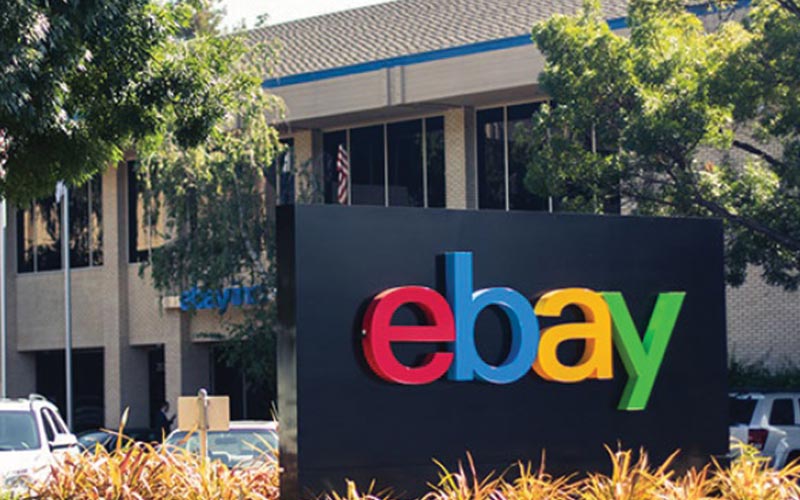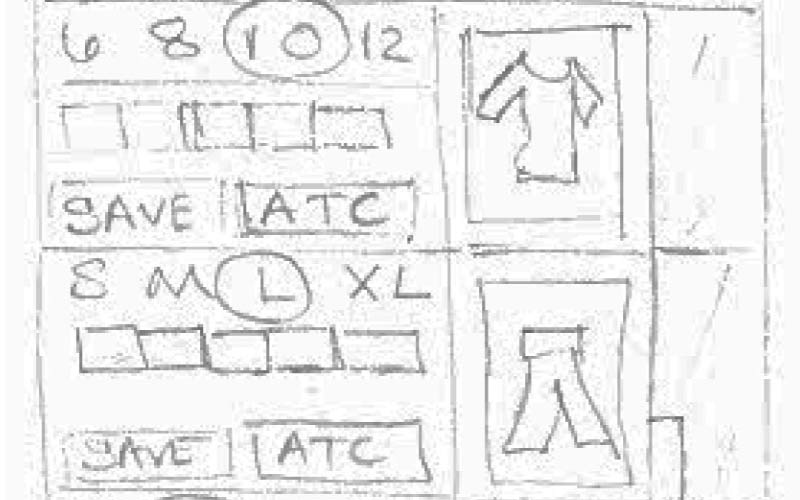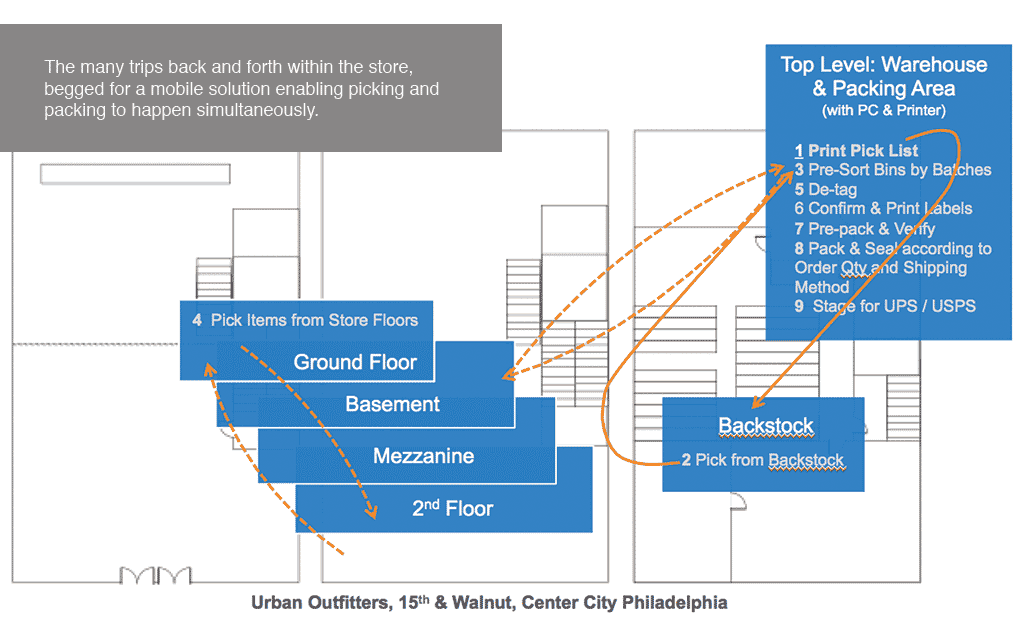
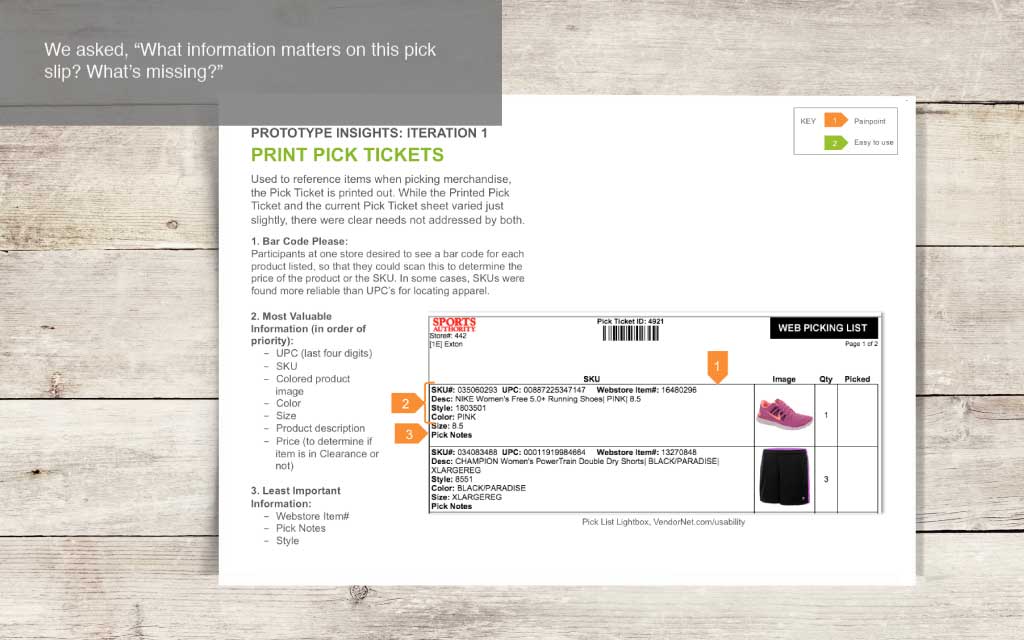
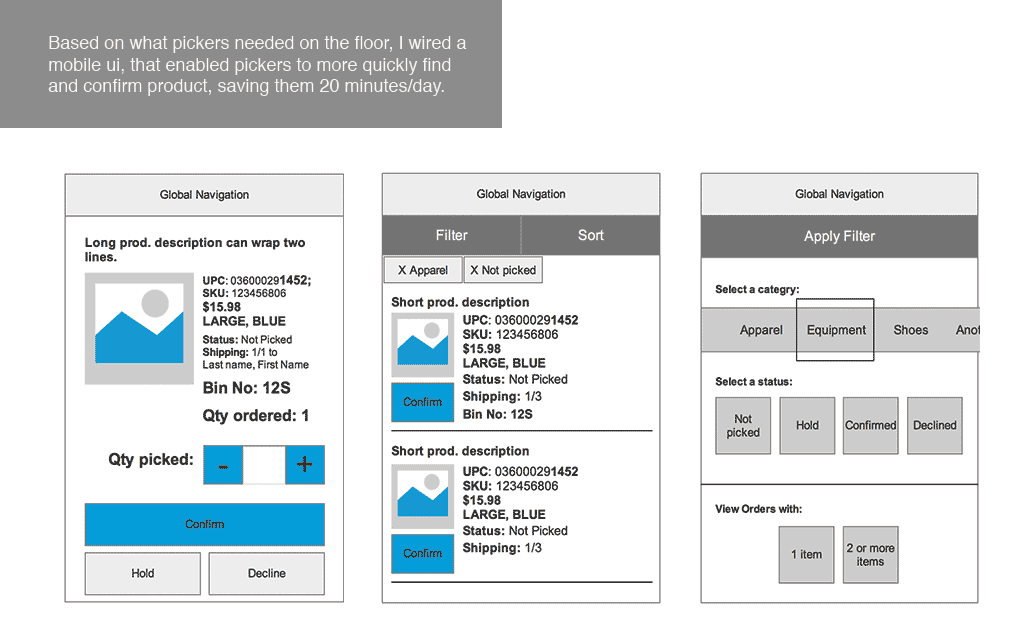
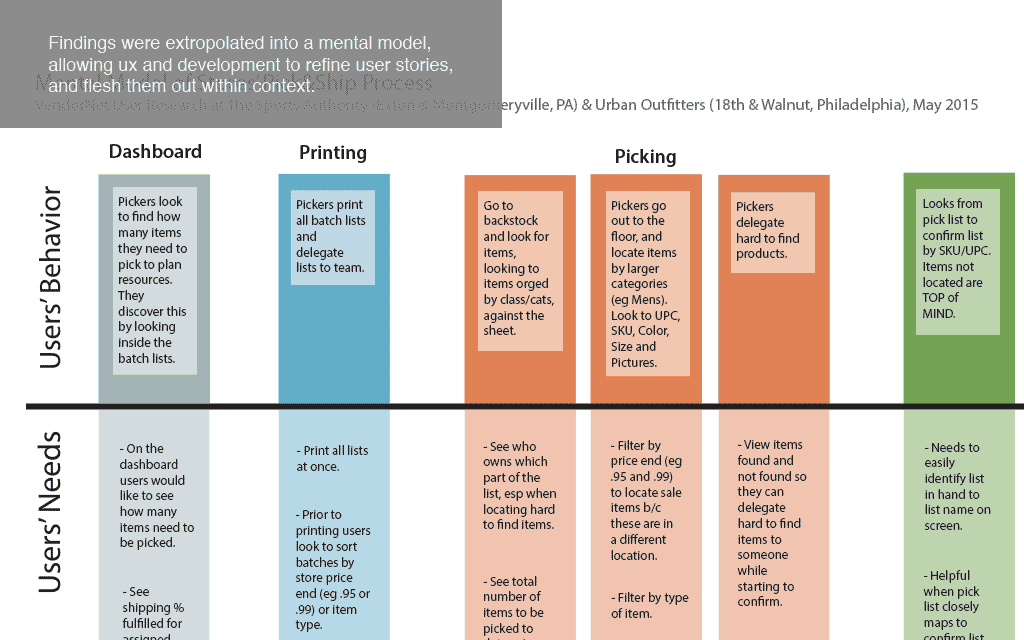
CONTEXTUAL INQUIRY REFRAMES PROTOTYPE ASSUMPTIONS
Effeciencies uncovered save stores 3.4 years in merch management.
Setting the Stage for Contextual Inquiry
VendorNet initially engaged User Research to test a prototype of their "Pick & Ship" Tool. The tool is regularly used by store managers and associates to process items to be picked from the store floor or back room and shipped.
User research added Contextual Inquiry to observe the overall process of how personnel actually picked, sorted and shipped merchandise. The intent: to find more synergy and increased efficiency between the "Pick & Ship" software and process.
Throughout the research, we embedded lead developers and the VP. Their deep product and roadmap knowledge balanced the researchers' unbiased, outside perspective. The combination yielded more salient insights.
Pick & Ship Process vs. Software
We visited three stores, two retailers. Each retailer had very different processes; in some ways they were polar opposite. Their inventory, protocols, staff management, and culture differed significantly. For physical space issues, all stores faced similar issues.
- For inventory management, one retailer could not distinguish between product in transit, on the floor, or in the backroom. For the other retailer, their inventory management was impeccable.
- Protocols for packing items varied substantially: one retailer had 7 checkpoints; the other one.
- For staffing Pick & Ship, one retailer relied on delegation, while the other assigned 1-2 dedicated staff.
- Culturally, one had a active, "all hands on deck feel", the other had a thoughful and more methodical approach.
“There have got to be 500 gloves here.” – P01 Gretchen, TSA Montgomeryville
In spite of these differences, patterns emerged; large gaps existed between stores' current Pick & Ship process and the existing software. The pressures of picking necessitated a mobile solution, where picking and confirming could happen on the store floor, at the same time. Critical improvements clarified needs for:
- Combining order processing via mobile in the actual physical space to minimize running back and forth.
- Fine tuning the parameters of how orders are sent to the store.
- Rearchitected flows to surface more necessary interactions such as updating orders and reprinting labels.
“Integrating picking with sorting orders would be a huge win for us. It would save the stores so much time.” – Stephanie S, Business Analyst, Urban Outfitters
Time is Money
The team ran with the test recommendations, folding them into their mobile interface. When implemented, 20 minutes per pickers' day will be saved. Across 19,782 stores that adds up to 3.4 years. That's 3.4 more years of store associates focusing on the customer in front of them.
Process Insight: When transferring insights from research, even the more elaborate reports can fall short of distilling insights into actionable tasks. In this study, we crafted a mental model that articulated user stories in the contexts of the necessary tasks at hand. More…
PROJECT DETAIL
- About VendorNet: Servicing 19,782 stores and growing, VendorNet sets up brick and mortar stores to fulfill internet orders, allowing store inventory to flow more rapidly. In 99 days they can set up Ship-to Store, Ship-from-Store and In Store PickUp, enabling retailers to transform their stores into mini omni-channel hubs. In 2013, VendorNet made 640 million in incremental revenue.
- Process: Contextual Inquiry & Prototype Testing, with embedded SMEs
- Skills: Product Research, UX Architecture
